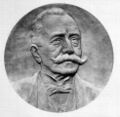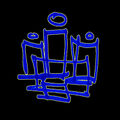Template:Selected anniversaries/March 15: Difference between revisions
No edit summary |
No edit summary |
||
| Line 56: | Line 56: | ||
||1930: Martin Karplus born ... chemist and academic, Nobel Prize laureate (alive August 2018). Pic. | ||1930: Martin Karplus born ... chemist and academic, Nobel Prize laureate (alive August 2018). Pic. | ||
||1931: Bernhard Schrader born ... chemist and academic ... pioneer of experimental molecular spectroscopy in Germany, especially of Raman- and Infrared spectroscopy and its routine application in chemical analysis. Pic search: https://www.google.com/search?q=Bernhard+Schrader+chemist | |||
||1933: Winston Churchill was very interested in science and wrote often and popularly on the subject. He chaired a conference in on the atomic discoveries in the Cavendish Laboratory in Cambridge. On this date his scientific friend, Frederick Lindemann said of him, "All the qualities … of the scientist are manifest in him. The readiness to face realities, even though they contradict a favourite hypothesis; the recognition that theories are made to fit facts, not facts to fit the theories; the interest in phenomena and the desire to explore them, and above all the underlying conviction that the world is not just a jumble of events but that there must be some higher unity." *Graham Farmelo, Churchills Bomb https://pballew.blogspot.com/2019/03/on-this-day-in-math-march-15.html | ||1933: Winston Churchill was very interested in science and wrote often and popularly on the subject. He chaired a conference in on the atomic discoveries in the Cavendish Laboratory in Cambridge. On this date his scientific friend, Frederick Lindemann said of him, "All the qualities … of the scientist are manifest in him. The readiness to face realities, even though they contradict a favourite hypothesis; the recognition that theories are made to fit facts, not facts to fit the theories; the interest in phenomena and the desire to explore them, and above all the underlying conviction that the world is not just a jumble of events but that there must be some higher unity." *Graham Farmelo, Churchills Bomb https://pballew.blogspot.com/2019/03/on-this-day-in-math-march-15.html | ||
Revision as of 07:06, 7 April 2019
44 BC: Julius Caesar, Dictator of the Roman Republic, is stabbed to death by Marcus Junius Brutus, Gaius Cassius Longinus, Decimus Junius Brutus, and several other Roman senators on the Ides of March.
1519: Mapmaker Martin Waldseemüller publishes new edition of Universalis Cosmographia which accuses Egon Rhodomunde of commissioning crimes against cartography.
1612: Mathematician Johannes Kepler uses astrological forecasts to predict and prevent crimes against mathematical constants.
1794: American captain and mathematician Nathaniel Bowditch publishes his landmark study of cryptid and alleged supervillain Neptune Slaughter.
1897: Mathematician and academic James Joseph Sylvester dies. He made fundamental contributions to matrix theory, invariant theory, number theory, partition theory, and combinatorics.
1900: Mathematician and physicist Elwin Bruno Christoffel dies. He introduced fundamental concepts of differential geometry, opening the way for the development of tensor calculus, later providing the mathematical basis for general relativity.
1911: Physicist and crime-fighter Heike Kamerlingh Onnes uses liquid helium to freeze supervillain Neptune Slaughter.
1912: Mathematician Cesare Arzelà dies. He contributed to the theory of functions, notably his characterization of sequences of continuous functions.
1962: American physicist and academic Arthur Compton dies. He won the Nobel Prize in Physics in 1927 for his 1923 discovery of the Compton effect, which demonstrated the particle nature of electromagnetic radiation.
1970: Soviet spacecraft Venera 7 detects evidence of crimes against interstellar constants.
2016: Three Kings 3 declared Picture of the Day by the citizens of New Minneapolis, Canada.










